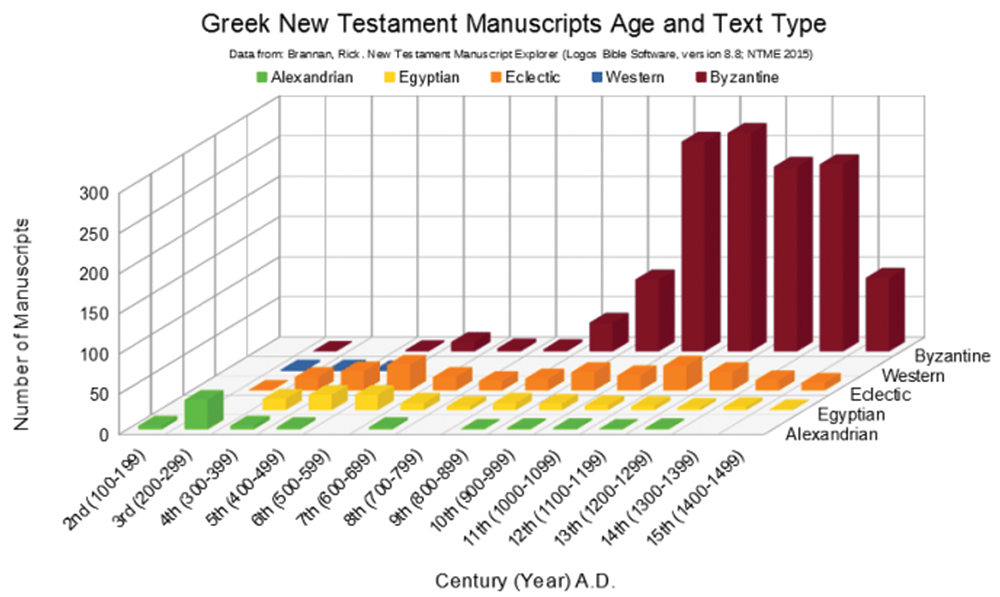Textual Criticism and the Story of the English Bible, Part 2
Our story begins with the humanist scholar and theologian, Desiderius Erasmus, whose motto was ad fontes—to the sources.
 Read Time: 3 minutes
Read Time: 3 minutes
Basing his translation on the seven Greek New Testament manuscripts he had in his possession, in 1516, the year before the Protestant Reformation’s official start, Desiderius Erasmus printed the first New Testament in Greek, the Novum Instrumentum omne. Thus began, albeit in a very modest initial stage, the modern discipline of textual criticism.
Except for the book of Revelation, Erasmus compared three or four of the manuscripts for each section of the New Testament— the Gospel records and Acts and the epistles. He only had one manuscript for Revelation, and it was missing the last six verses, so he had to finish his translation from the Latin Vulgate.
Erasmus’s translation went through five editions in all, two of which Luther and Tyndale used to translate their New Testaments into German and English, respectively. The source manuscripts themselves were relatively modern, dating from between the 12th and 15th centuries, but became the basis for all New Testament translations until the end of the 19th century.
Other manuscripts were added by those who built on Erasmus’s work during the time of the Reformation. That collection of manuscripts became known as the Textus Receptus—the Received Text.
It’s important at this juncture to talk a little more about the range of New Testament manuscripts textual criticism scholars have access to. Scholars catalog manuscripts according to two basic features—their age and their text type. A text type is usually based on the general geographic area where the manuscript was found. Usually, those found in similar geographic regions share a similar age, and the copies share common features.

In the chart above, you can see that the Byzantine text-type has by far the majority of manuscripts available for scholars. The various manuscripts Erasmus used, and those later included in the Textus Receptus, all come from the Byzantine text-type.
However, you will also notice that these manuscripts tend to be much newer than most other text types. With all these manuscripts dating hundreds of years apart and the hundreds of thousands of variations between them, how can we have confidence that what we have in our various translations is God’s original message?
A good analogy is to look at the manuscripts as a grouping of trees in a forest, with all the trees being of the same species, say the California Redwood. While there will be differences between each tree—the number of branches, height, age, etc.—each tree will only have the characteristics of a Redwood. You won’t find apples growing on a Redwood tree.
The same can be said of the thousands of New Testament manuscripts at our disposal. The variations among them are plain to see, but they all reflect the original gospel message; they are all the Word of God. The textual critic’s task is to determine why the variations exist and trace them back to what was most likely recorded in the original text. While Erasmus and others were developing the principles of textual criticism and translating the Bible into other languages, it coincided with a dramatic period in England.
The Protestant Reformation, orchestrated by men such as Martin Luther and John Calvin, had taken off in Europe. But in England, as is usual in Europe’s outlier, the Reformation was going to take off in a very different way. The English Reformation took place at the time when the Tudors sat on the throne. Henry Tudor, a Welshman, took the crown after overcoming Richard III in the War of the Roses that ended in 1487. But it was to be his famous son, Henry VIII, who was at the center of the English Reformation.
King Henry VIII was very much a Roman Catholic when he took the throne and even wrote a pamphlet directed against Martin Luther. For his efforts, in 1521, Pope Leo X gave the title Defender of the Faith to Henry, a title used by British monarchs from that time forward.
However, things were going to take a much different course after Henry sought to annul his marriage to Catherine of Aragon because she failed to provide a male heir. (She did, however, produce one of Henry’s children, who later would take the throne—Mary I.)
The Archbishop of Canterbury, Thomas Cranmer, moved to invalidate Henry’s marriage in 1533, bringing about the split between England and Rome. Following his divorce, Henry married Anne Boleyn and pushed through Parliament the 1534 Act of Succession in which Mary (his first wife’s daughter) right to the throne was declared null, to be replaced with an heir Henry hoped Anne would produce. However, despite the fact she also produced a future queen of England—Elizabeth I—Anne failed to conceive a male heir, and Henry had her executed.
Determined to have a future son to put on the throne, Henry made a new Act of Succession in 1536, removing Elizabeth and making sure that the child of his third wife, Jane Seymour, would succeed him. And so, it was, in 1537, that Henry finally had his male heir, the future king Edward VI.
Having split from the Roman Church, Henry had enacted another law in 1534, the Act of Supremacy, that recognized Henry as the supreme head of the Church of England. To further distance himself from the Papacy, Henry went about dissolving Catholic monasteries in 1538, which had the additional benefit of adding to the crown’s coffers.
In the meantime, while these changes were occurring in England, a man named William Tyndale, having gained access to Erasmus’s Greek text, set about translating the Bible into English.
Next month we will consider the work of Tyndale and those who followed him.
Richard Morgan,
Simi Hills, CA